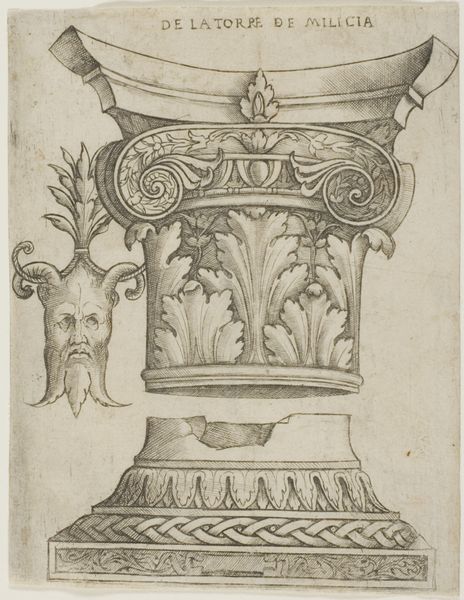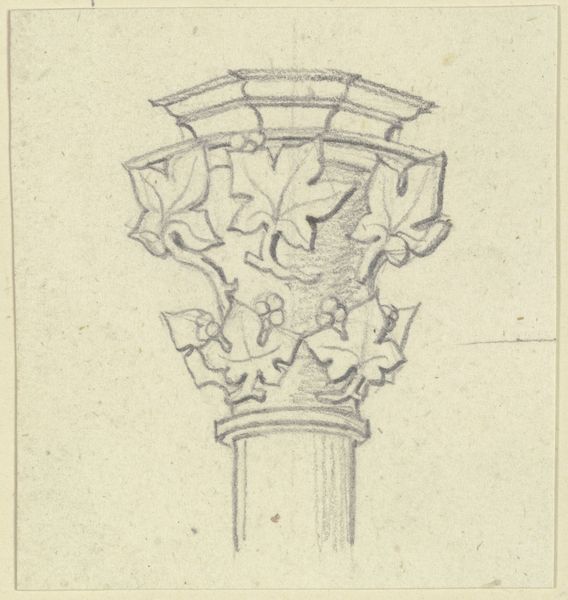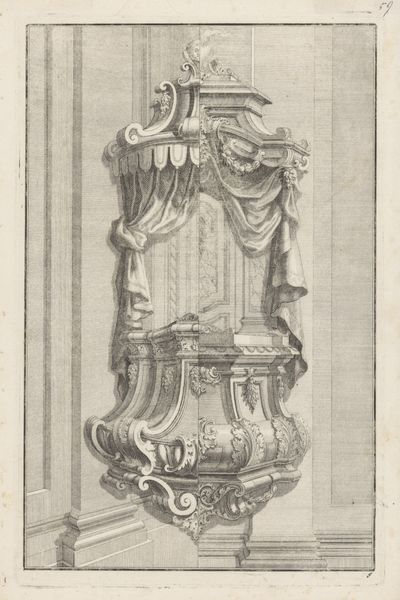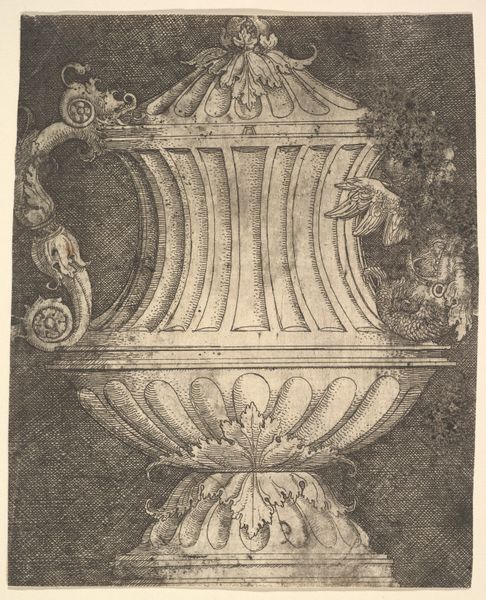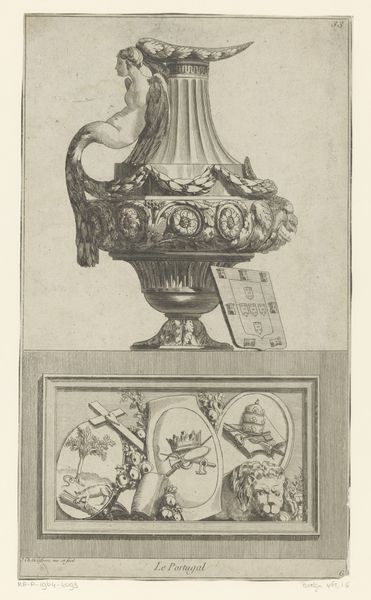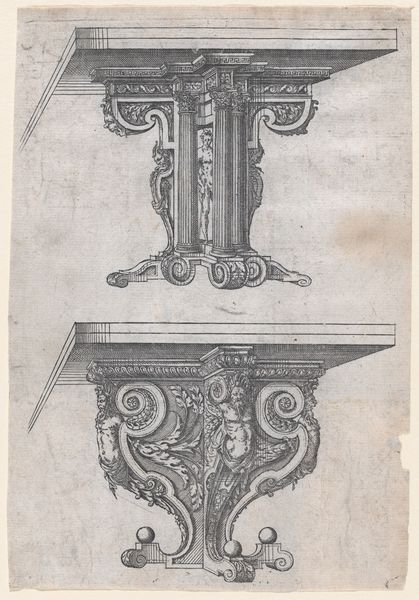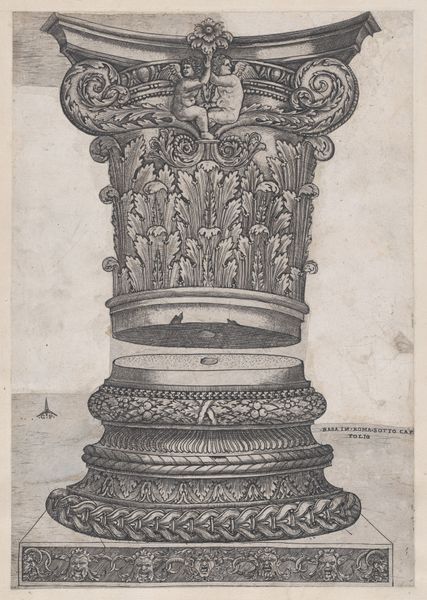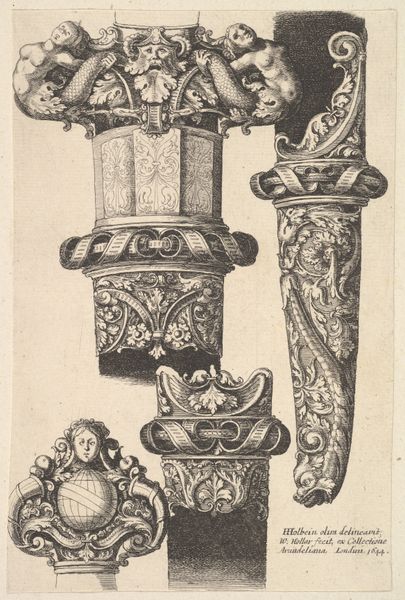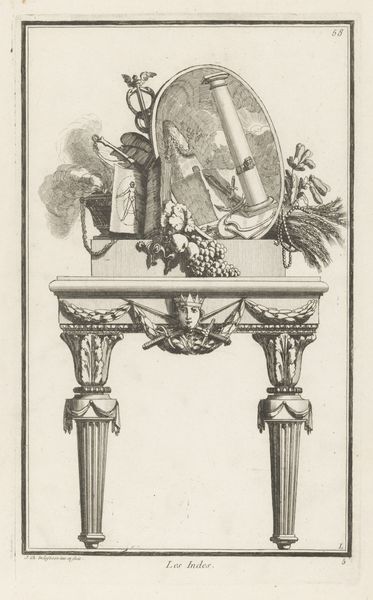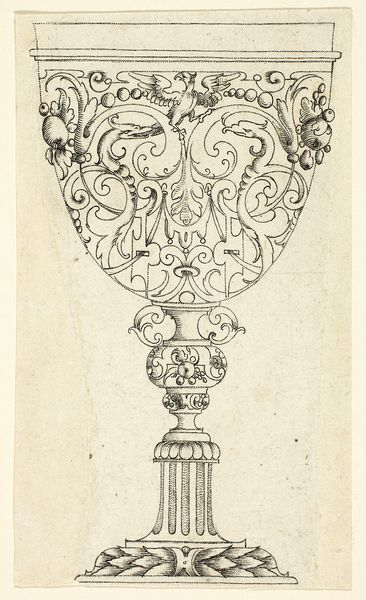
Composite capital with measurements 1525 - 1535
0:00
0:00
drawing, print, engraving, architecture
#
drawing
# print
#
form
#
geometric
#
classicism
#
line
#
academic-art
#
italian-renaissance
#
engraving
#
architecture
Dimensions: Sheet: 8 13/16 x 5 11/16 in. (22.4 x 14.5 cm) Mount: 10 11/16 x 6 7/16 in. (27.2 x 16.3 cm)
Copyright: Public Domain
Editor: This is an engraving from the Italian Renaissance, around 1525-1535, called "Composite Capital with Measurements," attributed to Monogrammist G.A. & the Caltrop. It's incredibly detailed, but there's also a real sense of fragility with the broken base. What stands out to you when you look at this, professor? Curator: I am captivated by how this image holds within it the weight of classical ideals. It is more than a mere depiction of architectural form; it’s a coded system. Notice how the composite capital merges the Ionic and Corinthian orders? This blending isn’t just aesthetic. What do these orders individually represent to you? Editor: I think Ionic columns symbolize learning and calmness, while Corinthian ones are all about elegance and sophistication... Curator: Exactly! By combining them, what new symbolic meaning emerges, do you think? Editor: Maybe the artist tried to create a symbol that combines wisdom with refined aesthetics? Curator: Precisely! It points to a cultural memory deeply rooted in classical antiquity, which was being actively revived during the Renaissance. This isn't simply about recreating the past. It's about reinterpreting and adapting it for a new age, laden with Christian symbolism but consciously recalling older "pagan" ideas. The broken base also carries significance. It's a deliberate rupture, but from what? Editor: A departure from classical thought? Or maybe even a sort of artistic humility? Curator: Perhaps both. It shows a conscious acknowledgement of the past, a rebirth represented by this carefully measured, idealized, but damaged fragment, reminding us that no ideal is fully realized. Editor: I never would have considered how much historical and symbolic weight such a precise image of architectural fragment could contain. Curator: It shows how the symbols persist and how each age finds its way to rewrite their significance.
Comments
No comments
Be the first to comment and join the conversation on the ultimate creative platform.
